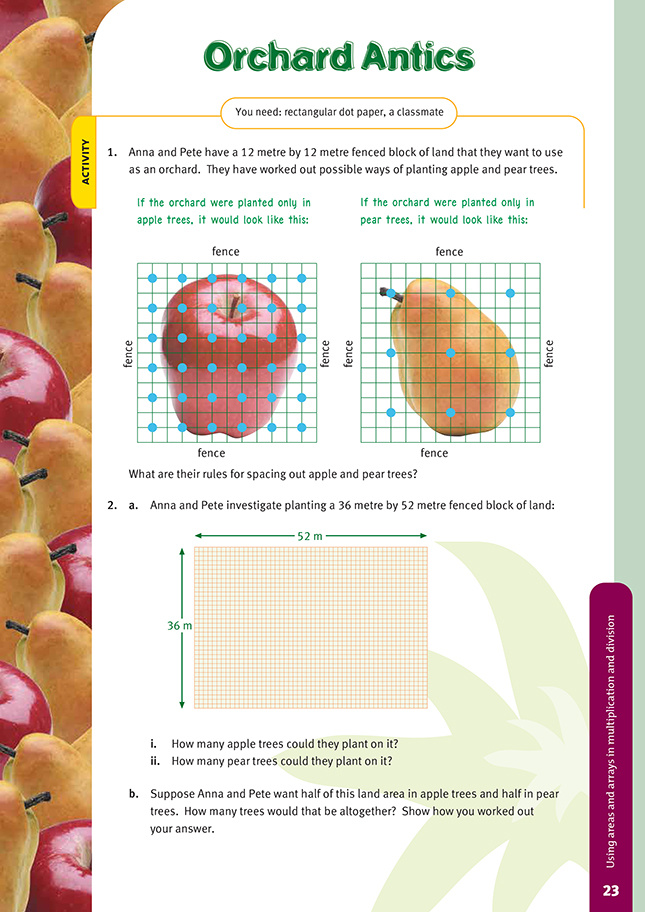This is a level 4 number link activity from the Figure It Out series. It relates to Stage 7 of the Number Framework.
A PDF of the student activity is included.
Click on the image to enlarge it. Click again to close. Download PDF (177 KB)
use multiplication facts and arrays to solve problems
FIO, Link, Number, Book Three, Orchard Antics, page 23
Rectangular dot paper
A classmate
In this activity, the students use their knowledge of multiplication arrays and area to work out the number of trees that can be planted in an orchard.
The students could fairly easily count each tree on the 12 metre by 12 metre piece of land or at least count the number of rows and the number of trees in each row and multiply them together. But they need to find more efficient strategies to find the number of trees that could be planted in question 2.
The simplest way to approach a 52 metre by 36 metre plot is to divide each measurement by 2 for the apple trees and by 4 for the pear trees (so 26 by 18 apple trees and 13 by 9 pear trees). For sides not divisible evenly by 4, the students will need to realise that some land will be spare if the trees are to have the required
amount of growing space.
Some possible extension questions are:
“How many apple trees could be planted on a rugby field?”
“How many pear trees could be planted on your school field?”
Answers to Activity
1. The apple trees are planted 1 metre in from the fence in a horizontal and vertical direction. They are planted 2 metres apart, horizontally and vertically.
The pear trees are planted 2 metres in from the fence in a horizontal and vertical direction. They are planted 4 metres apart, horizontally and vertically.
2. a. i. Using the planting rules from question 1, they could plant 468 apple trees (18 rows of 26 trees per row).
ii. Using the planting rules from question 1, they could plant 117 pear trees (9 rows of
13 trees per row).
b. Using the planting rules from question 1, there are two possible answers, depending on whether the land is divided in half vertically (that is, into
two pieces 26 m x 36 m) or horizontally (that is, into two pieces 52 m x 18 m). For the vertical split, they could plant 288 trees: 234 apple trees (13 rows of 18 trees per row) and 54 pear trees (6 rows of 9 trees per row). For the horizontal split, they could plant 286 trees: 234 apples (9 rows of 26 trees per row) and 52 pears (4 rows
of 13 trees per row).
